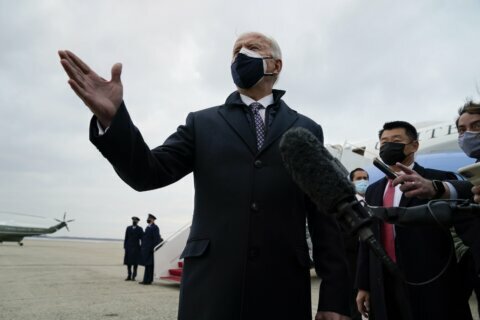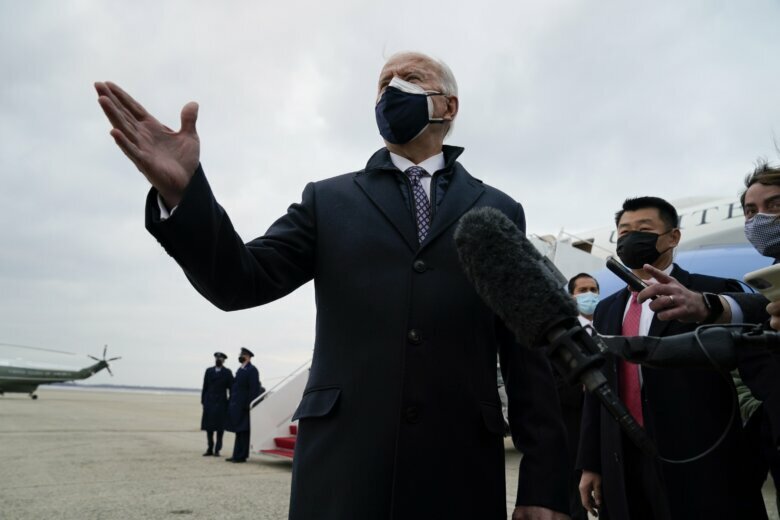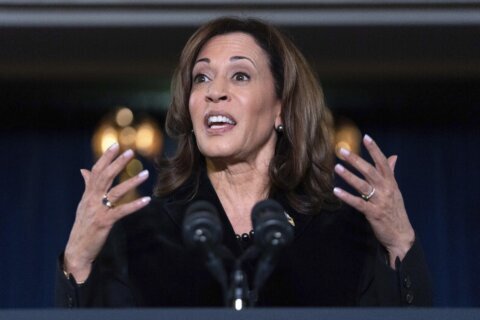
Is President Joe Biden’s $1.9 trillion Covid relief package too big? Plenty of economists across the ideological spectrum think so.
But economics was only one of several considerations in its assembly. All come into sharper focus this week as narrow congressional Democratic majorities in both chambers prepare to send it to the Resolute Desk for Biden’s signature by mid-March.
If that happens, it would take the federal government’s coronavirus response over the last year to nearly a staggering $6 trillion — all of it borrowed money.
Biden advisers argue nothing about current economic conditions prevents Washington from spending as much as circumstances of the pandemic warrant.
“The bound is what is defensible and sensible,” Brian Deese, director of the National Economic Council at the White House, told CNN. But without a doubt, a sensible Biden proposal could have come with a significantly smaller price tag.
The current package includes $1,400-per-person relief checks — a residual effect of former President Donald Trump’s scorn for Senate Republican Leader Mitch McConnell last December. After McConnell shepherded through a $900 billion relief proposal providing $600 per person, Trump said the checks should have been $2,000. House Speaker Nancy Pelosi, then-President-elect Biden and the candidates in two crucial Georgia Senate runoffs swiftly embraced Trump’s idea — fattening the cost of the current bill, which will top recipients up to that $2,000 level, by hundreds of billions.
The $350 billion in state and local government aid far exceeds estimates of their revenue loss from the pandemic. The aid also aims to help those governments avoid more layoffs as they struggle with added coronavirus burdens. Michael Strain, an economist at the conservative American Enterprise Institute, estimates that $100 billion would accomplish that.
The package also includes Democratic spending priorities long predating the pandemic. Those include more than doubling the minimum wage to $15 an hour as well as billions for expanded Obamacare subsidies and tax benefits for low-income families.
Too much vs. not enough
The new proposal, combined with December’s relief, approaches a quarter of the size of the entire US economy. Former Treasury Secretary Larry Summers, publicly voicing concerns that other Democratic economists express privately, has warned it might “overheat” economic activity by sparking excessive inflation.
Economists less worried about inflation simply question the need for that much relief. Overall personal income actually remains higher than before the pandemic, notwithstanding interruptions in economic activity. Much of earlier relief checks went into Americans’ savings accounts.
“More likely it’s just really ineffective,” cautioned Marc Goldwein of the non-partisan Committee for a Responsible Federal Budget. Goldwein says $1.3 trillion would easily suffice and offer more “bang for the buck.”
Biden, Treasury Secretary Janet Yellen, and Trump-appointed Federal Reserve Chairman Jerome Powell respond in unison: the risk of spending too little exceeds the risk of too much. They invoke a lesson from the Obama-Biden administration, that exaggerated fear of deficits kept Washington’s response to the Great Recession too small and made recovery too slow.
“Now is not the time to worry about inflation or high interest rates,” said Democratic economist Diane Lim. “Neither exist, and neither is likely to happen anytime soon.”
Filling in Democratic priorities
Following that advice doesn’t require a package so large and sprawling. But in addition to economics, Biden’s plan reflects the convergence of Democratic values with opportunity.
The party has long pushed to lift the $7.25 an hour federal minimum wage, which has eroded in value since Congress last voted to raise it in 2007. Today’s soft labor market makes this a less than ideal moment to hike it. But unified control of government gives Democrats their best chance in years.
Overall income figures mask a “K-shaped recovery” leaving affluent professionals unscathed and lower-income service workers badly wounded. Biden’s package responds not just to that short-term disparity, but also to decades of divergence between rich and poor that Democrats have aimed to narrow.
The package’s “temporary” provisions lifting low-income families are “really the foundation of setting up a fairer society,” explained former Obama White House economist Betsey Stevenson.
Congressional state of play
Politics dictate the ultimate design constraint. No package, however elegant or transformative, has any impact without votes in Congress to pass it.
Republicans oppose anything near Biden’s ambition. Ten GOP senators — the bare minimum needed to bypass a filibuster — propose spending just one-third as much. After watching just seven Republican vote to convict at Trump’s Senate impeachment trial, the White House doubts negotiations can produce an acceptable bipartisan compromise.
That means relying entirely on Democratic votes — and accommodating the expensive priorities required to secure them. Party leaders say $1.9 trillion is not too much to hold on to all 50 Democratic senators, as required for passage without Republican help.
Even if the package passes, Summers warns that spending more than necessary on Covid relief may complicate Biden’s ability to corral votes for a second legislative priority with a yet-larger price tag. Though its cost and elements remain in flux, a “Build Back Better” proposal expected this spring could contain $3-trillion worth of investments in infrastructure and other investments in long-term economic growth and equity.
At least that plan will likely include at least some tax increases to offset its costs. Aides say Biden has made clear that, unlike with emergency relief, he doesn’t intend to add permanent changes in benefit programs onto America’s structural budget deficit.
“At some point,” agreed Stevenson, the Obama White House economist, “we’ve got to raise revenue to pay for these things.”








